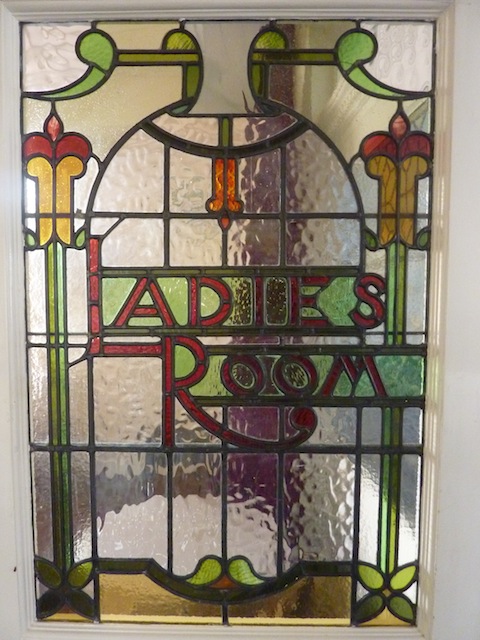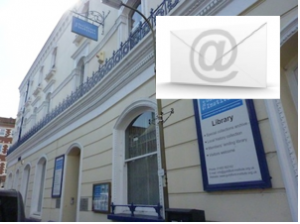 Abraham Lincoln
If given the truth, the people can be depended upon to meet any national crisis...
Abraham Lincoln
If given the truth, the people can be depended upon to meet any national crisis...
 Guildford news...
for Guildford people, brought to you by Guildford reporters - Guildford's own news service
Guildford news...
for Guildford people, brought to you by Guildford reporters - Guildford's own news service
Letter: Perfect Community ‘Hub’ already Exists. It’s the Guildford Institute!
Published on: 31 Aug, 2012
Updated on: 31 Aug, 2012
Guildford Borough Council has urged everyone in Guildford to read carefully and comment on the Interim Town Centre Framework, which has been prepared for adoption by the Executive next week.
This document can be found on the borough council’s website (www.guildford.gov.uk) and has the potential to shape the town’s development for the future.
As a dutiful citizen I was reading this document and was surprised to find in Section 51 under a sub-heading – Community Priorities – a suggestion to “Develop New Guildford Library as a Community Hub.
This could include staying open in the evening with events and activities, could include meeting rooms for community groups. There is potential to achieve this by creating a new building, thus releasing the North Street site for redevelopment….”. I was amazed – such a hub exists already!
It is the Guildford Institute: a grade II listed building in North Street. Founded by a Guildford pork butcher and a few liked minded friends, it has existed since 1834.
It is an important part of the town’s heritage, indeed of the national heritage, because it is one of the few survivals of the mechanics’ institutes and libraries established in the 19th century “for the education of the working classes” which have played such an important part in the social history of the UK.
Read the late Russell Chamberlin’s book Survival for the full story. He concludes the institute’s fascinating story by saying: “Looking back over the chequered history of the GI one can only marvel at its regenerative powers. It has been split asunder and patched together, tottered to the brink of extinction and tottered back – the very building which is its seat has grown on an adhoc basis rather than been planned and it is viewed with mingled exasperation and affection by its members as they balance its inconvenience with its ambience.”
 The affection of its members is evidenced by the fact that the educational courses and visits arranged are fully booked as soon as the programme is published as are the talks and activities. People queue daily for the delicious lunches served in the Assembly Room and its members form lively special interest clubs which meet regularly in its rooms.
The affection of its members is evidenced by the fact that the educational courses and visits arranged are fully booked as soon as the programme is published as are the talks and activities. People queue daily for the delicious lunches served in the Assembly Room and its members form lively special interest clubs which meet regularly in its rooms.
The Chess Club, for example, has been meeting there for years. The charming and interesting library is totally run and manned by volunteers – it is the beating heart of the institute and some of its collection of books, pictures and archive material date back to the 19th century.
The institute’s members own and manage the building which is, indeed, viewed with exasperation. In 1917 the adding of classrooms incurred huge debt. In 1934 the borough surveyor made a damning report: “The present rooms are badly planned for public requirements and the entrances are most unsatisfactory. Passages within are cramped and general conveniences are very deficient.”
In May 1980 it was reported: “Dry rot has returned in a more virulent form than ever before – estimated cost of restoration would be £20,000 (in fact it proved to be four times that amount). An appeal to the town raised just £180. But help was at hand. In 1968 the University of Surrey had been established on Stag Hill: its adult education programme was developing and it needed a town centre link and a marriage was arranged: the university became trustee for the building, and the Guildford Institute became the Guildford Institute of the University of Surrey.
Its buildings were restored to their present sound and attractive state with the assistance of a large loan, the building department supervised and advised on restoration. The Department of Educational Studies moved in and the future seemed assured.
However, as in any marriage there were problems: an article in the Keep (the GI magazine) made this clear: “In allocating space we must serve several masters. The Department of Educational studies was responsible for filling every available space with learning activities and requires maximum availability and flexibility, clubs and societies using the rooms for meeting require stability and reliability at minimum cost. Sometimes we noticed the system of booking mysteriously failed – classes would claim the same room at the same time, infurIated teachers and students confronting each other in territorial disputes. Participants in Saturday sociology seminars would arrive to find rooms occupied by infants reciting Shakespeare or improvising Drama.”
Accessibility and disabled access were constant problems – this was a public building with a basement and three floors and no lift. The university planned to instal a lift but government cuts hit its financial situation and divorce ensued. The national banking crisis followed and even the Royal Bank of Scotland was unable to renew its lease of the North Street frontage while the bank’s future was in question.
This was the most important part of the GI’s income. Once again the life of the Guildford Institute was threatened and its members could almost hear the sound of prowling delevelopers, salivating at the thought of the building’s prime site at the junction of North Street and Ward Street!
Yet again the members voted overwhelmingly to fight for independent survival. The bank renewed its lease, staff was cut and volunteers came forward to man the library and help out with reception. The building served a vital purpose in the town providing as it had from the beginning a mixture of educational, recreational and social activities activities at a reasonable cost in pleasant and attractive surroundings.
It serves all ages but those specially attracted are adults whose age is increasing and whose needs for the type of activity offered are also increasing. The variety of interests the programme develops may not actually prolong the life of the elderly, but it contributes to their enjoyment of it.
This building is open to the public – since Alf Morris’s Chronically Sick and Disabled Persons Act (1970) these activities must be available to all: a lift, passages and doorways which will enable the elderly and infirm to circulate freely in the building must be supplied.
A membership of almost 500 has already contributed a sum of £35,000, and a grant from SITA has raised £60,000. Work must start in the autumn and the full sum needed for the first phase is £250,000.
Detailed plans can be seen on the notice board at the institute. If you haven’t been before why not visit it on Heritage Open Day, Saturday, September 8.
New members are welcome. Contributions to the institute development fund will be gratefully received, and so will advice on how the extra money can be raised. No new “vision” is needed to build a new community “hub” – merely to adapt the present building to present day needs.
Please note – readers’ letters do not necessarily reflect the views of The Guildford Dragon NEWS or its writers.
Do you have an issue you wish to write about? Perhaps you wish to complain about something, bring attention to a subject, offer congratulations or thanks or reply to another reader’s letter?
All publishable views are welcome. Please do send your letters in to The Guildford Dragon NEWS by emailing mgilesdragon@gmail.com
Recent Articles
- County Council Elections ‘Must Go Ahead’ Say Surrey Council Leaders
- Notice: Become a Tech Angel
- Guildford’s Angels Receive National Lottery Grant
- National Trust Announce Funding Secured, At Last, for Weir Bridge Repair
- Letter: Time for Action to Repair the Tumbling Bay Bridge and Restore the Wey Towpath
- MP Says Thames Water Have ‘Done Nothing’ Despite Residents Reporting Sewage Spill
- Letter: Residents & Independents Group Calls for More Time as Local Government Reorganisation Looms
- Following Debate, SCC Leader Is Writing to Request Postponement of May Elections
- Letter: Impact of Airport Decisions Will Be Felt By Generations To Come
- Car Thief Brothers Jailed


Search in Site
Media Gallery
Dragon Interview: Local Artist Leaves Her Mark At One of England’s Most Historic Buildings
January 21, 2023 / No Comment / Read MoreDragon Interview: Lib Dem Planning Chair: ‘Current Policy Doesn’t Work for Local People’
January 19, 2023 / No Comment / Read MoreA3 Tunnel in Guildford ‘Necessary’ for New Homes, Says Guildford’s MP
January 10, 2023 / No Comment / Read More‘Madness’ for London Road Scheme to Go Ahead Against ‘Huge Opposition’, Says SCC Leader
January 6, 2023 / No Comment / Read MoreCouncillor’s Son Starts Campaign for More Consultation on North Street Plan
December 30, 2022 / No Comment / Read MoreCounty Council Climbs Down Over London Road Works – Further ‘Engagement’ Period Announced
December 14, 2022 / No Comment / Read MoreDragon Interview: GBC Reaction to the Government’s Expected Decision to Relax Housing Targets
December 7, 2022 / No Comment / Read MoreHow Can Our Town Centre Businesses Recover? Watch the Shop Front Debate
May 18, 2020 / No Comment / Read More












Recent Comments